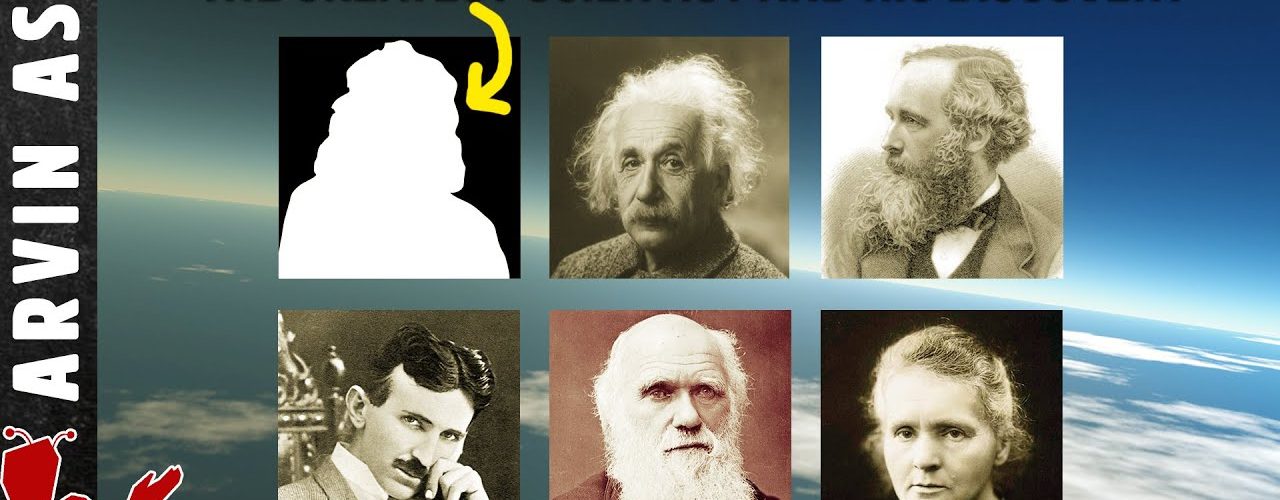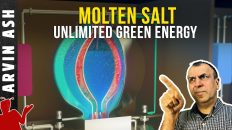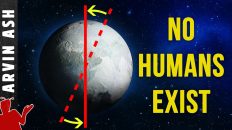The greatest scientist of all time. And the birth of physics.
When I took my first mechanics class in college, the professor related a story that I will never forget. He said that on a recent trip to Europe, he had visited this scientist’s grave.
And as he stood near the grave along with other visitors, his knees buckled. He fell to the ground, and started to weep uncontrollably, not because he was hurt, but because he was overcome with emotion standing in such close proximity to the scientist whose work he had devoted his entire life to, and whom he considered the father of modern science itself.
In a poll taken many years ago, 50 of the most respected scientists of the world were asked to list their choice of the greatest scientists of all time. Of course, the usual suspects were on those lists, Maxwell, Bohr, Einstein, Darwin, Galileo, Tesla, Curie. But only one man was on every single list at or near the top.
The late Nobel Laureate Subramanian Chandrashekhar famous for the Chandrasekhar limit, once said, “it is fashionable today to think of Einstein as the epitome of scientific genius, and compared us ordinary mortals, Einstein was indeed a giant, but compared to this man, he runs a very distant second.”
Even Einstein had said, that his work would have been impossible without this man’s discoveries. You might have guessed by now, that the man I am talking about is Isaac Newton.
But what makes him a giant amongst giants? He had many major discoveries, but perhaps his most significant united the earth with the heavens?
What you have to understand about Newton’s accomplishments is that this was the mid to late 1600’s. These were the dark ages of science. Everything was a miracle.
People believed in magic, curses, astrology and spells. It was commonly thought that the earth was 6000 years old. And they had other crazy ideas too.
People believed insects like roaches could be born from dirt and garbage.
Evil spirits could occupy people’s bodies.
Sickness could be cured by draining your blood.
You could make it rain by plowing land.
And that tiny human babies lived inside sperm cells.
These were all common beliefs around the time of Newton’ birth.
20th century scientists like Einstein and Bohr, and even 19th century scientists like Maxwell had a body of scientific work that they could build upon. They could stand on the shoulders of other great scientists.
Newton, in the 17th century, however, had almost no shoulders to stand on. There were some prior ideas from scientists like Galileo and Keppler that Newton used, but there was no rigorous mathematical basis to develop the ideas that he had.
The math to express the dynamics of velocity and acceleration for example had not been invented yet. Newton invented the mathematics to express his laws. That mathematics is called Calculus today.
Newton changed the way science was done. In outlined a way to decide the true nature of reality, and he invented the modern rigorous mathematical way of looking at the world.
Newton had 4 major accomplishments:
1) Developed calculus – virtually all modern scientific analysis relies on this
2) Discovered many of the laws of optics – including the composition of light and the nature of color
3) Developed the laws of motion, including a clear definition of what constitutes a force
4) Derived the universal law of gravitation
Any one of these accomplishments would be a feat worthy of a modern-day Nobel prize, and would have put Newton among the greatest scientists who ever lived. But to have done all four is staggering.
But I left out an even more amazing fact, Newton came up with the theoretical basis of all of these accomplishments in a period of only 18 months. Let me repeat, 18 months — between 1665 and 1667, at the ripe old age of 25.
Interestingly, he did this while he was in isolation at home because his university was closed due to an epidemic called the bubonic plague that was ravaging England at the time. This is eerily similar to the Covid-19 pandemic that is going on right now.
Can you imagine that some genius student today with time on his or her hands, might be coming up with the theory of everything right now in isolation at home because of Covid-19. We can hope?
And the crazy thing is, he may have never published any of his works, had it not been for the prodding of Edmond Halley, for whom Haley’s comet is named, who convinced Newton to publish it.
Newton published it but 20 years later in 1687 – in an epic landmark book of physics called Philosophiae Naturalis Principia Mathematica (filo-sofi-eye Na-tur-alis Prink-ee-pee-ah Mathematica) or Mathematical Principles of Natural Philosophy, which is considered the greatest single written work in the history of science, no contest.
By the way, this greatest scientific work of all time only sells a few hundred copies per year.
I believe Newton’s greatest discovery may very well be number 4 – the law of universal gravitation, which brought together all his other laws of motion.
You may heard the legend that an apple fell on Newton’s head causing a eureka moment of discovery. But that’s probably not what actually happened. According to Newton himself, one fall day on his farm during those plague years, an apple fell at his feet.
As he looked at the apple, and looked up at the tree from where it fell, he asked himself what is it that caused the apple to fall? It must be some kind of force from the earth acting on the apple without touching it. Action at a distance.
How high does this force reach he thought? If I climbed to the top of a mountain and dropped an apple, it would also fall to the ground. Could it reach even higher, perhaps as high as the moon?
He had a brilliant insight that it may be the same force acting on the moon, but just with a different magnitude. He reasoned that whatever the force is, it may be proportional the total amount of stuff in the object, all the atoms, in other words its mass.
So for example, the pull of the earth would be proportional to its mass, and the pull of the apple would be proportional to the mass of the apple.
Since Newton’s third law says that forces are equal and opposite, the force exerted by the apple on the earth is equal in magnitude to the force exerted by the earth on the apple, this force must be proportional to the product of the two masses.
Newton also guessed that whatever gravity is, since it emanates from all parts of the earth, it must spread out like a sphere in all directions. And if that is the case then it must decrease in magnitude proportional to the surface area of a sphere.
Because surface area is proportional to the radius squared using this formula. And since this surface area gets bigger the farther away from earth you are, then the magnitude of this force must decrease by r squared as well. This means that the r squared must be in the denominator.
This is similar to the way light dims the further away you are from the source of the light. As this graphic shows, when light is 2 units from its source, it has to go through 4 times as much surface area, when it is 3 units from its source, it has to go through 9 times as much surface area, so it dims proportionately. Gravity decreases the same way.
F = G M1 M2/d^2
So this completes the formula for the law of universal gravitation. The force is proportional to a constant, now called the gravitational constant G, times the product of the two masses, divided by the distance between the two masses, squared.
So if gravity is pulling the moon towards the earth, why doesn’t the moon hit the earth? This is the part where Newton had a huge insight and made a crucial connection between the forces on earth and the forces in the cosmos. He did a thought experiment.
If you have an object moving at a constant speed with no force like friction or gravity acting on it, Newton’s first law says that it will just continue moving in a straight line, at a constant velocity V. There is no acceleration.
If, on the other hand, you dropped that object from rest near something with gravity like earth. It will accelerate towards the earth. This means its velocity will start off at zero, but continue to speed up at a faster and faster velocity as it falls.
Acceleration means It’s velocity will increase according the formula a=delta V/delta t change in velocity divided by a change in time. Since this is a continuous process over infinitesimally small changes, acceleration is written in calculus as dV / dt or the derivative of velocity.
Now if we take an object traveling at a constant velocity while at the same time, it experiences an acceleration due to the gravity of earth, it will have a different kind of motion. It will no longer move in a straight line, but will experience a pull towards the earth, while also continuing to travel in the direction that it had been traveling.
It will not slow down or speed up because the force it experiences is in a direction perpendicular to its direction of motion. Its trajectory will now be in a direction towards the earth. So it will move both down as well as across. As it keeps going, it will continue to move in this same kind of direction towards the earth as well as in the direction it was initially moving.
Although we are making a polygon in this illustration, you have to imagine that these changes in direction of the object will be infinitesimally small. And if you take the tiny movements of the object towards earth continuously as it moves, calculus lets you realize that the real trajectory of this object will be circular. It will form an orbit.
This is how the moon forms an orbit around the earth. So in this way the moon is falling towards the earth but don’t worry it will not hit the earth.
Another way to visualize this is to use another famous thought experiment that Newton used. Imagine a cannon ball on top of a mountain that fires a cannon at a certain speed. The cannon ball will land at some distance away from where it was fired as it gets pulled toward the earth due to gravity.
Now if you shoot it at a faster speed, it will land further way from where it was shot. If you keep going up in speed, it will land further and further away.
And if you fire it at a sufficiently fast speed, Newton said it will go all the way around the earth and hit the back of the cannon. If the cannon was not there, and if there is no friction from the air, the cannon would continue to go around the earth in an orbit.
It is actually falling towards the earth, but never hitting the earth. This is the same way the moon is also falling towards the earth.
Newton also showed that if you fire the cannonball at a somewhat higher speed than needed to just make it orbit in a circle, it will orbit in the shape of an ellipse. The planets orbit the sun in a similar elliptical shape.
Newton reasoned that this law of gravitation might be universal, not just limited to the earth and the apple and the moon. He knew about moons of Jupiter and clusters or stars, and there is no reason his laws wouldn’t apply to them as well.
The heavens were now connected to everyday motion on earth. There were no unique forces affecting in the rest of the cosmos or in outer space that was not also going on right here on earth.
The idea that everything can be understood using the same principles of motion on earth as well as outer space, changed the paradigm that earth was somehow special. So now our place in the universe was just another planet that behaved like any other planet in the solar system.
Note that Newton did not explain what gravity is. He only described what gravity does, how it behaves. But what exactly is gravity? Why do massive objects attract other massive objects, why don’t they repel each other, or not have any affect on each other at all?
Einstein provided a little bit of insight by saying that space time bends like a trampoline in the presence of a mass. But we still have to ask why does mass or energy bends space time? What is the connection between mass and space-time? This is a question we really haven’t answered.
And that will probably take another intellectual giant. But if humanity can produce an astounding intellect like Newton, I have no doubt that we can produce another. And I hope I’m still alive to read the paper written by the next Newton that changes our paradigm once again.







